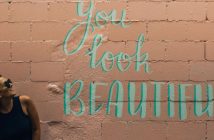
There’s a famous bit from Indo-Canadian comedian Russell Peters’ breakout Comedy Central special in 2006, in which he talks about a not-so-distant, post-racial world: “Three hundred years from now, there’s not gonna be anymore white people. There’s not gonna be anymore black people. We’re all just going to be beige. The whole world’s mixing. There’s nothing you can do about it. Eventually, we’re all gonna become some sort of hybrid mix of Chinese and Indian. It’s inevitable! They’re the two biggest populations in the world. So you can run from us now. But sooner or later, we’re gonna hump you.”
My friends and I laughed until we cried the first time we saw the widely-shared video on YouTube. We found instant recognition in Peters’ fine-tuned accents and observations about multicultural Canada. All jokes aside, the “beige” future also happened to be a concept I was impassioned about.

In middle school, some Asian friends started banding together under the banner of pan-ethnic “Asian pride.” Instead of house parties in the suburbs, we ventured downtown to have bubble tea at Taiwanese student cafes, belt out Cantopop songs at private karaoke parlors, and play Dance Dance Revolution at arcades. For a while, we even had our own social network (here’s looking at you, Asian Avenue).
However, I felt more and more uncomfortable with the mish-mash of characteristics that made up a “true” Asian: driving an imported car with a fat spoiler, listening to K-pop, wearing baggy jeans with turned-up cuffs, dating within your own race, and generally having a misplaced sense of pride.
I’m sorry, but I liked – and still like – Led Zeppelin more than BoA or Jay Chou. Char siu buns are delicious, but so are samosas and grilled cheese sandwiches. I did a complete 180 and collected friends from wildly different backgrounds, which is admittedly a pretty unremarkable feat in Canada. They ranged from first-generation Iranian-Canadian to Congolese refugee, dyed-in-the-wool Québécois, Spanish-Filipina by way of the US, and everything in between. “Wouldn’t it be great if our descendants were all beige?” I asked loudly and often.

Over time, I realized the naiveté of this sentiment. In my early 20s, I discovered Racialicious, a blog about “the intersection between race and pop culture.” Even within people of the same ethnic group, as with colorism among African-Americans, there’s widespread discrimination based on minor differences in appearance. In modern China, pale skin is a cornerstone of the bai, fu, mei (“white, rich, beautiful”) trifecta of desirable characteristics in women. In other words, people will always find ways to draw lines in the sand – even if they are all beige.
Yet, living in Beijing for the past four and a half years has reaffirmed rather than dampened my belief in human relationships. Working at the magazine has allowed me to come into contact with families of all kinds, including the ones featured in this month’s issue, who eschewed convention in favor of individuality. I still think a lot about issues of race and identity, but I can only hope that I’ll be brave enough to conduct my relationships – all of my relationships – on my own terms.
This article originally appeared on page 7 of the April 2015 Issue of beijingkids. Click here for your free online copy. To find out how you can obtain a hard copy, contact distribution@truerun.com



